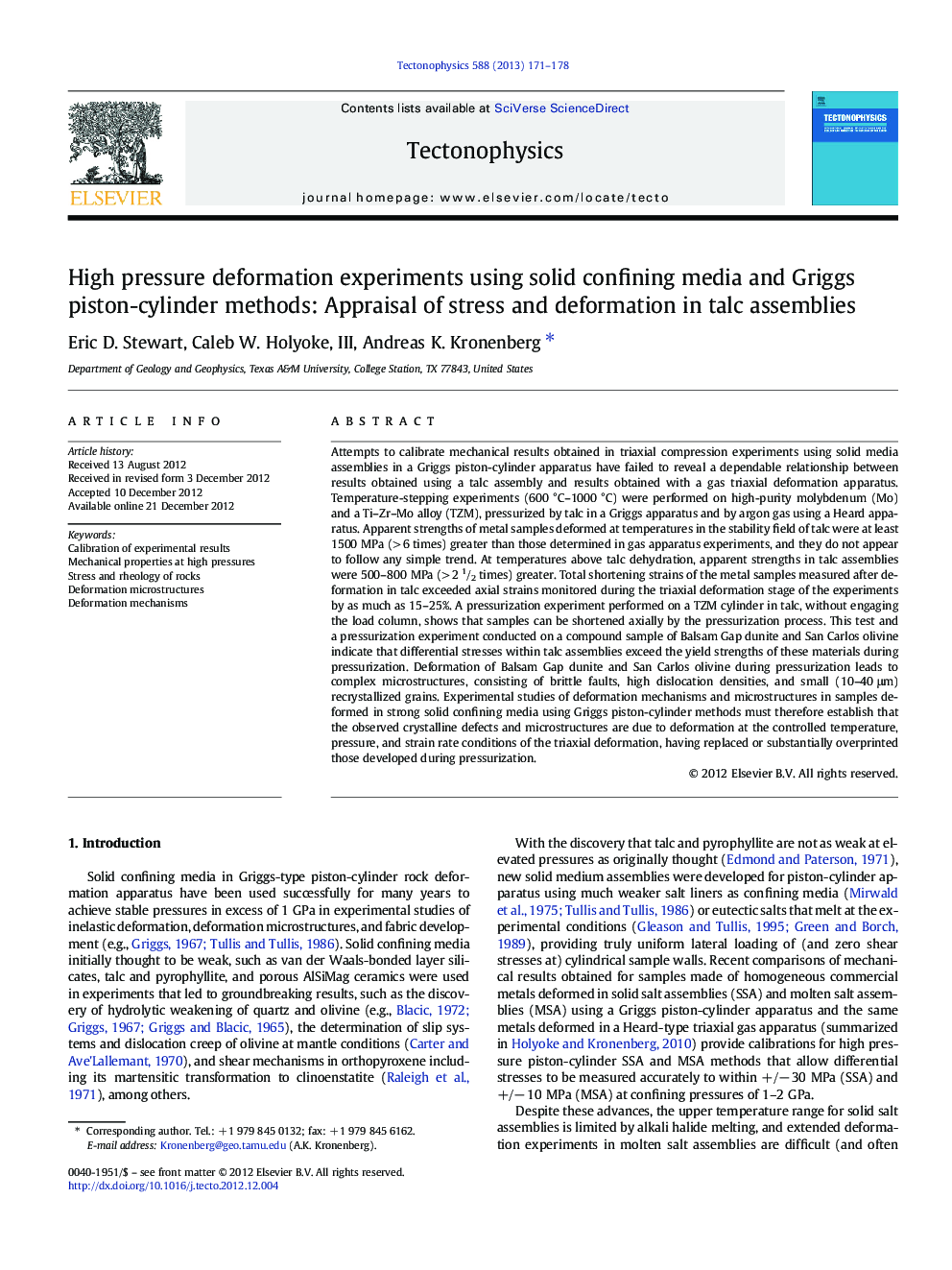| کد مقاله | کد نشریه | سال انتشار | مقاله انگلیسی | نسخه تمام متن |
|---|---|---|---|---|
| 4692552 | 1636797 | 2013 | 8 صفحه PDF | دانلود رایگان |
Attempts to calibrate mechanical results obtained in triaxial compression experiments using solid media assemblies in a Griggs piston-cylinder apparatus have failed to reveal a dependable relationship between results obtained using a talc assembly and results obtained with a gas triaxial deformation apparatus. Temperature-stepping experiments (600 °C–1000 °C) were performed on high-purity molybdenum (Mo) and a Ti–Zr–Mo alloy (TZM), pressurized by talc in a Griggs apparatus and by argon gas using a Heard apparatus. Apparent strengths of metal samples deformed at temperatures in the stability field of talc were at least 1500 MPa (> 6 times) greater than those determined in gas apparatus experiments, and they do not appear to follow any simple trend. At temperatures above talc dehydration, apparent strengths in talc assemblies were 500–800 MPa (> 2 1/2 times) greater. Total shortening strains of the metal samples measured after deformation in talc exceeded axial strains monitored during the triaxial deformation stage of the experiments by as much as 15–25%. A pressurization experiment performed on a TZM cylinder in talc, without engaging the load column, shows that samples can be shortened axially by the pressurization process. This test and a pressurization experiment conducted on a compound sample of Balsam Gap dunite and San Carlos olivine indicate that differential stresses within talc assemblies exceed the yield strengths of these materials during pressurization. Deformation of Balsam Gap dunite and San Carlos olivine during pressurization leads to complex microstructures, consisting of brittle faults, high dislocation densities, and small (10–40 μm) recrystallized grains. Experimental studies of deformation mechanisms and microstructures in samples deformed in strong solid confining media using Griggs piston-cylinder methods must therefore establish that the observed crystalline defects and microstructures are due to deformation at the controlled temperature, pressure, and strain rate conditions of the triaxial deformation, having replaced or substantially overprinted those developed during pressurization.
► Talc assemblies continue to be used in high pressure rock deformation studies.
► We failed to find a reliable calibration to correct talc assembly mechanical results.
► Samples are deformed during pressurization in talc.
► Samples pressurized in talc exhibit complex deformation microstructures.
► These results bear on ~ 50 years of high pressure experimental studies.
Journal: Tectonophysics - Volume 588, 11 March 2013, Pages 171–178
